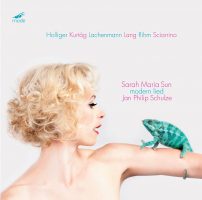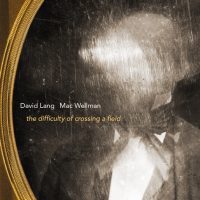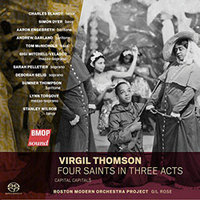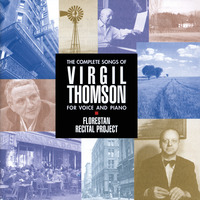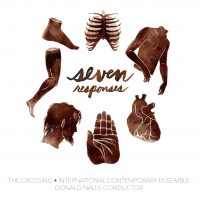Armchair Operas and Amusements 13.
|
Grant Chu Covell [September 2017.]
“modern lied.” Heinz HOLLIGER: Sechs Lieder nach Gedichten von Christian Morgenstern (1956-57). Salvatore SCIARRINO: Due Melodie (1978). Helmut LACHENMANN: Got Lost (2007-08). György KURTÁG: Requiem po drugu, Op. 26 (1982-87). Wolfgang RIHM: Ophelia Sings (2012). Bernhard LANG: Wenn die Landschaft aufhört (2015). Sarah Maria Sun (sop), Jan Philip Schulze (pno). mode 297 (1 CD) (http://www.moderecords.com/). An invigorating program featuring difficult works in the lied tradition. We’ve encountered coloratura soprano Sun before as a member of the virtuosic Neue Vocalsolisten Stuttgart, and as soloist in other contemporary efforts. Could this be the start of a series? Perhaps Holliger’s six are the most conventional (the piano accompanies the voice) but that assertion obscures the practical fact that Sun must soar across long lines. We might also expect the status quo from Rihm, but Ophelia Sings (text from Shakespeare) is forthrightly expressive, tinged with tonal bits, and requires the pianist to speak up now and again. Sciarrino’s two contain his characteristic unnerving, quivering vocal line over glittering piano arabesques. He discovered the same Gianbattista Marino poem published in different places and times (although “Occhi stillanti” and “Occhi stellanti” are but one letter removed) and so set the same words in two different ways. Lang’s irregularly rotating repetition through an unpunctuated text by Dieter Sperl might actually pass unnoticed given the performers’ intensity. Kurtág’s Op. 26, “Requiem for the Beloved,” offers four immensely contrasting, intense movements to love poems by Rimma Dalos. The longest entry is Lachenmann’s Got Lost which presents a range of destabilizing sounds within its 25-minute ambiguous structure. The text draws from Nietzsche, Fernando Pessoa and words seen in an apartment block’s elevator: “Today my laundry basket got lost. / It was last seen standing in front of the dryer. / Since it is pretty difficult to carry the laundry without it I’d be most happy to get it back.”
David LANG: the difficulty of crossing a field (2002). Cast and chorus includes: Beverly O’Regan Thiele, Laquita Mitchell, Mari-Yan Pringle, Nicole Mitchell, Martin Bakari, Jorell Williams, Brandon Coleman, Isaiah Robinson, Cree Carrico, Jay O. Sanders, Daniel Zippi and Christopher Burchett; Harlem String Quartet: Melissa White, Ilmar Gavilan (vln), Jaime Amador (vla), Ismar Gomes (vlc), Douglas Kinney Frost (cond.). Cantaloupe Music CA21107 (1 CD) (http://www.cantaloupemusic.com/). Lang has skillfully enlivened playwright Mac Wellman’s reshaping of a short Ambrose Bierce story. Arias, choruses and narration proceed over string quartet in an enlightened minimal and melodic style. We hear from family, slaves and townspeople as they try to unravel a mystery: In 1854, in Selma, Alabama, a man vanishes in broad daylight while traversing his field. There were people who saw him there one moment and then suddenly not. The community has opinions and ideas, and the whole story is framed as if there’s a secret. The work builds through different retellings of the essential actions, characters and music providing gentle insistence. Towards the end, “the seventh telling,” opening with solo voice and violin, is particularly fine.
Virgil THOMSON: Four Saints in Three Acts (1934); Capital Capitals (1927)*. Cast includes: Charles Blandy*, Simon Dyer*, Aaron Engebreth, Andrew Garland*, Tom McNichols, Gigi Mitchell-Velasco, Sarah Pelletier, Deborah Selig, Sumner Thompson*, Lynn Torgove, Stanley Wilson; Linda Osborn* (pno), Boston Modern Orchestra Project, Gil Rose (cond.). BMOP/sound 1049 (2 SACDs) (http://www.bmopsound.org/). Would it be right to say that if there is just one Thomson opus you must experience, then it should be Four Saints in Three Acts? Stein’s famously nonsensical libretto receives a comprehensive Thomson treatment: wry and apparently chaste. Some will be exasperated by the repetition, that the stage directions are sung, that it’s probably more enjoyable if you don’t understand the words at all. Actually, it reminds precisely of those moments when you suspect Handel did not yet understand English. One must be in the right frame of mind to appreciate the topsy-turvy rambling and the blanched hymnal accompaniments. There are more than three acts (just barely), and there are many more than four saints within the 55:30 + 32:08 durations (with the 19:36 Capital Capitals, disc two is 51:43). Few serious pieces are so absurd. However delightful or exasperating the opera may be, this performance sets a high measure for all to follow. Capital Capitals, with another Stein text from several years before, is shorter, but despite the polish on display, actually grows tiresome with its four declaiming male voices and punctuating piano. Thomson seems to be following Satie’s example, but hasn’t yet figured out how to balance wit and simplicity.
“The Complete Songs of Virgil Thomson.” Virgil THOMSON: Var. comps. Florestan Recital Project: Sarah Pelletier (sop), Lynne McMurtry (c-alt), William Hite (ten), Aaron Engebreth (bar), Alison D’Amato, Linda Osborn (pno), John McDonald (perc). New World Records 80775-2 (3 CDs) (http://www.newworldrecords.org/). This impressive project, recorded in 2015, demonstrates a consistency and thoroughness that must be appreciated. Thomson wrote songs throughout his long life. Here are songs written in his twenties (he was born in 1896, in Kansas City, Missouri), while he lived in Paris (1925-40), and afterwards while a famed resident of New York City’s Chelsea Hotel (1940-89). The latest song is The Cat from 1980. As warmups to operas projected and executed, there are settings by Gertrude Stein and Kenneth Koch: “…he [Koch] writes like Gertrude, except it makes sense.” Say what you will about Thomson’s style, it is lucid. Religious and nonsense material are treated similarly with the same purity and earnestness. Throughout the collection, I hear moments that suggest why Thomson appreciated Satie, such as in the Mass for Solo Voice (1960), or the songs with a unison or organum piano accompaniment. From the 1930s onwards, perhaps as a consequence of Thomson’s work with Boulanger, we can hear the composer’s accompaniment simplifying as the vocal line troughs the text like an eager stream. There are 77 sung works across three discs (71:20 + 76:04 + 50:57). Everything is well-recorded so that piano rings without being overbearing and the words can be heard cleanly. A plump 76-page booklet offers detailed notes and complete texts.
“Seven Responses.” Caroline SHAW: To the Hands (2016). Hans THOMALLA: I come near you (2016). Pelle GUDMUNDSEN-HOLMGREEN: Ad cor (2015). Anna THORVALDSDOTTIR: Ad genua (2016). David T. LITTLE: dress in magic amulets, dark, from My feet (2016). Santa RATNIECE: My soul will sink within me (2016). Lewis SPRATLAN: Common Ground (2016). The Crossing, International Contemporary Ensemble, Donald Nally (cond.). Innova 912 (2 CDs) (http://www.innova.mu/). It’s unusual – but we have it here – that a collection of contemporary pieces, seven in this case, rise to such a high standard. Perhaps it’s because they all respond to Buxtehude’s Membra Jesu Nostri (1680) which itself sets an exacting model of expression. Also, the performances by the mixed chorus, The Crossing, and the varied instrumental ensembles that draw from the International Contemporary Ensemble are superbly balanced. None of these seven cantatas are long (the discs are 54:04 + 50:35). Shaw wrote her own texts for To the Hands, using some of Buxtehude’s words as well as statistics from the Internal Displacement Monitoring Center. Violin harmonics add magic to the chorus in the fourth movement. Thomalla took words from Arnulf of Leuven and the Song of Solomon. The music churns like a chorale played unhurriedly with interfering dissonances. Gudmundsen-Holmgreen’s texts are by Ursula Andkjær Olsen and are also taken from the Old Testament. The active percussion is especially striking. The fourth and final movement is actually the first three layered over each other simultaneously and quite artfully. Thorvaldsdottir scores Guðrún Eva Minervudottir’s text for solemn chorus and string quintet; Ratniece uses the 13th-century letters of St. Clare of Assisi to Blessed Agnes of Prague. Little provided his own words for a slow, weighty discourse on the crucifixion nails, and Paul Kane devised the libretto for Spratlan’s effective mini opera whose characters worry about the destroyed environment.
B Lang, D Lang, DT Little, Gudmundsen-Holmgreen, Holliger, Kurtág, Lachenmann, Ratniece, Rihm, Sciarrino, Shaw, Spratlan, Thomalla, Thomson, Thorvaldsdottir
[More
B Lang, D Lang, DT Little, Gudmundsen-Holmgreen, Holliger, Kurtág, Lachenmann, Ratniece, Rihm, Sciarrino, Shaw, Spratlan, Thomalla, Thomson, Thorvaldsdottir]
[Previous Article:
Kurtág: Signs, Messages, but no Games / Armchair Operas and Amusements 12. / Hungarian Holiday 4.]
[Next Article:
Used Bin Troll Tweets BB.]
|
